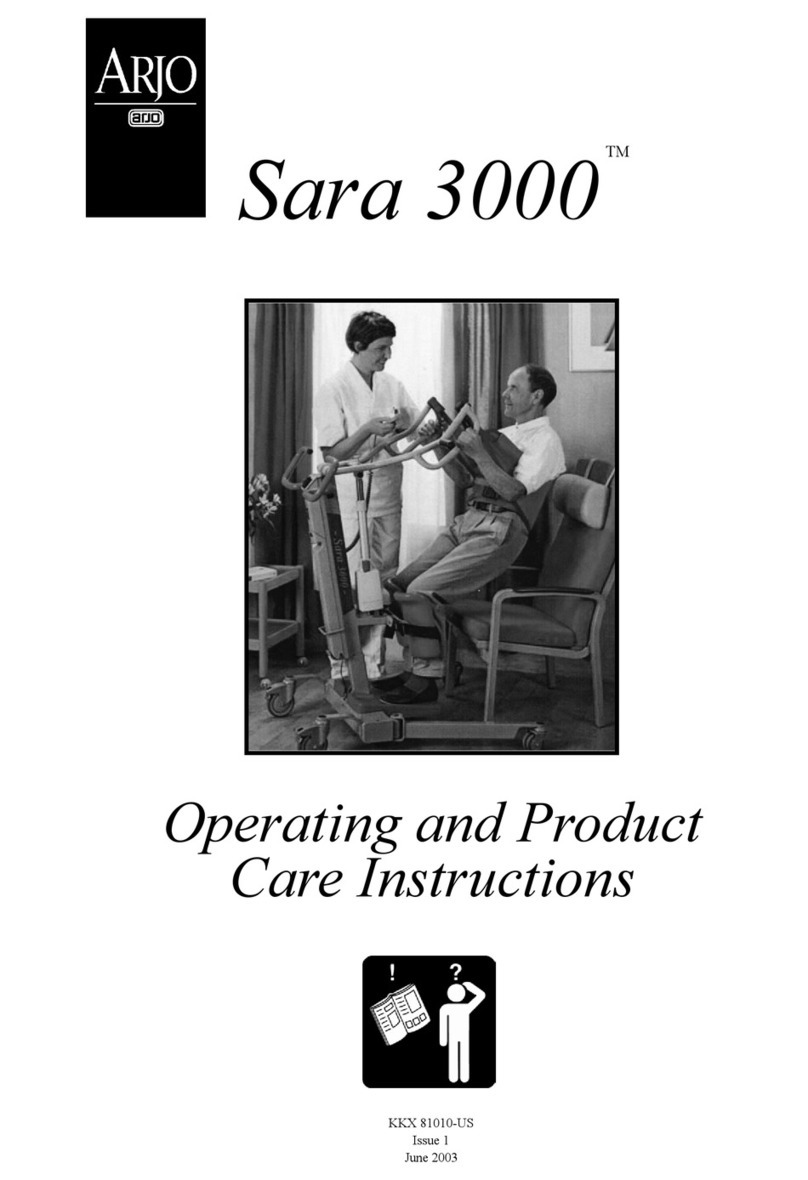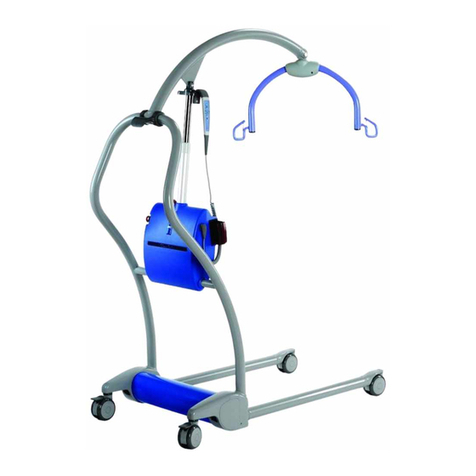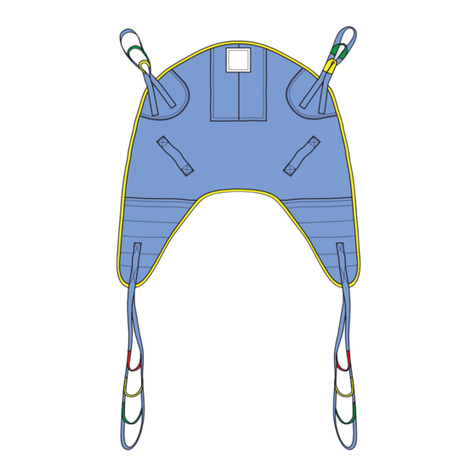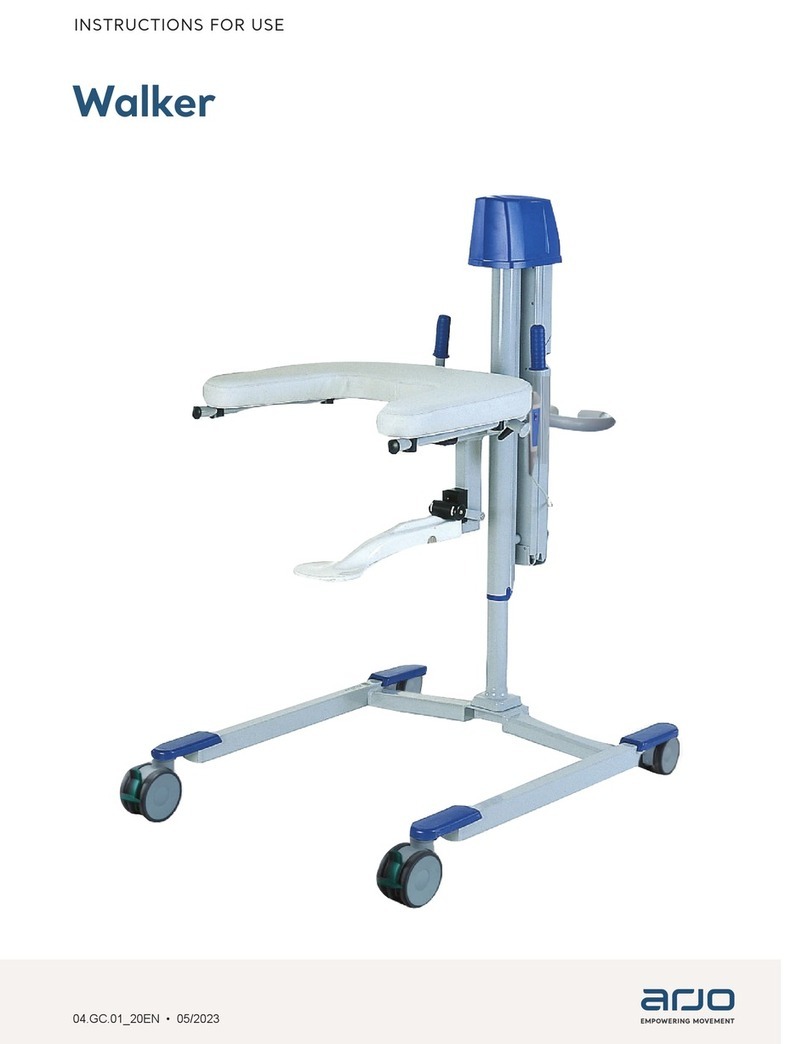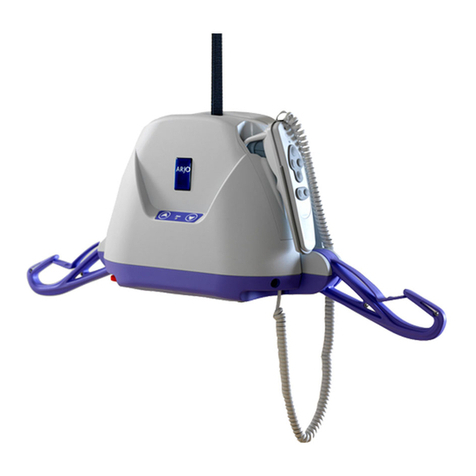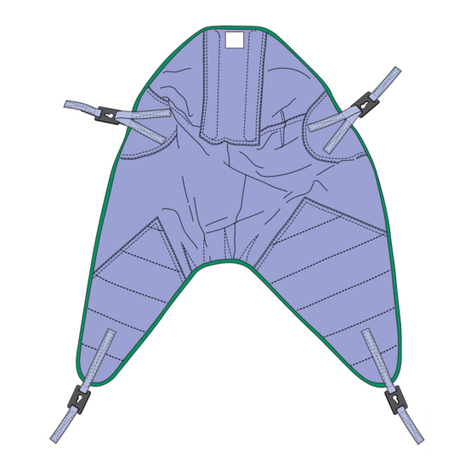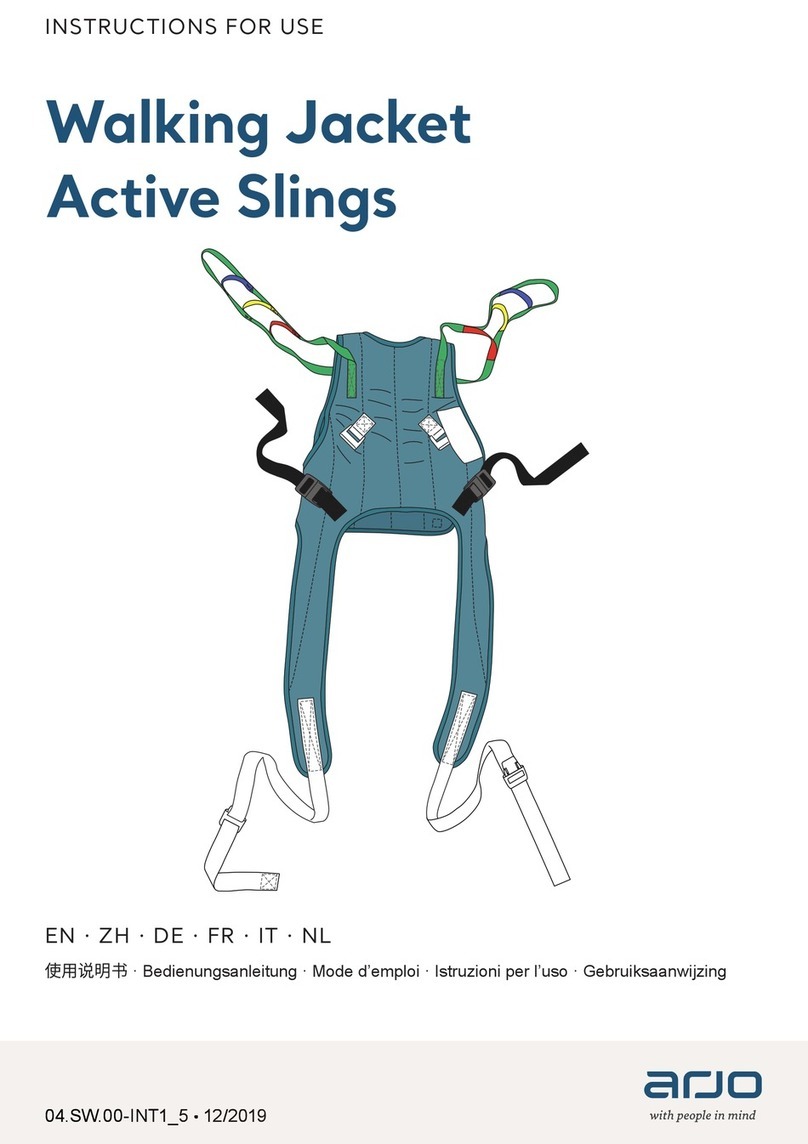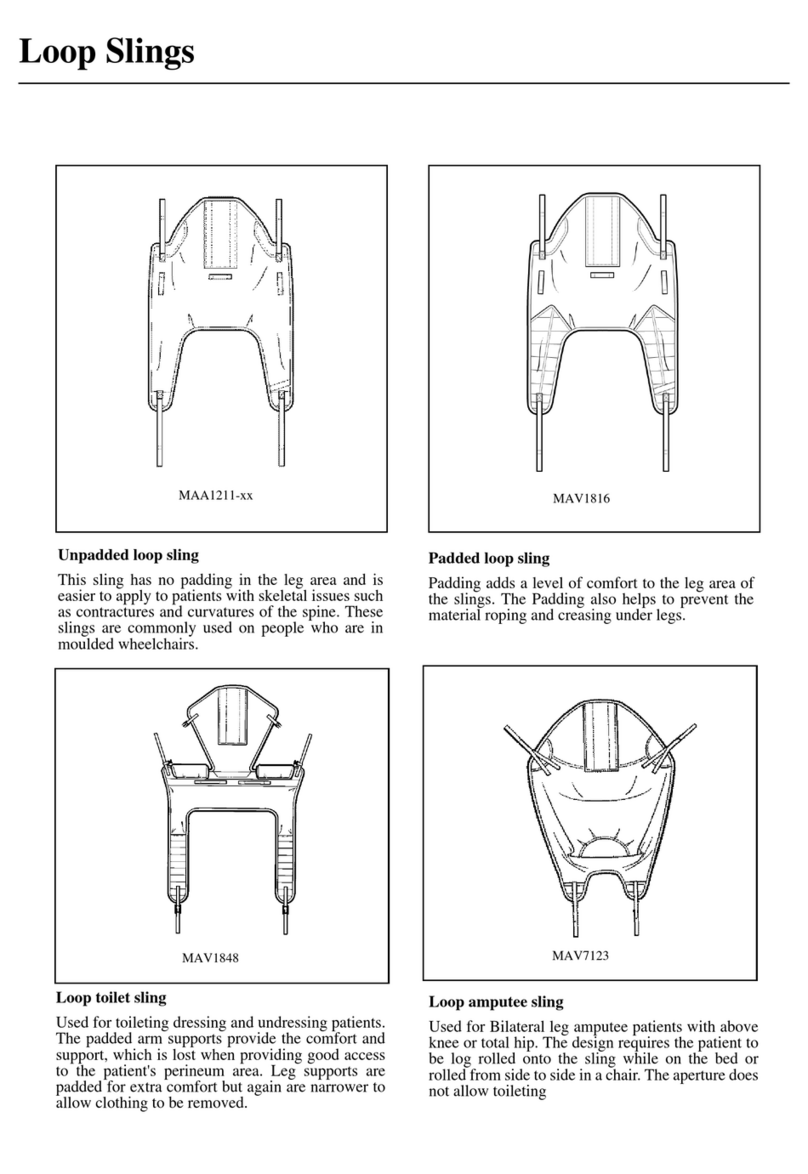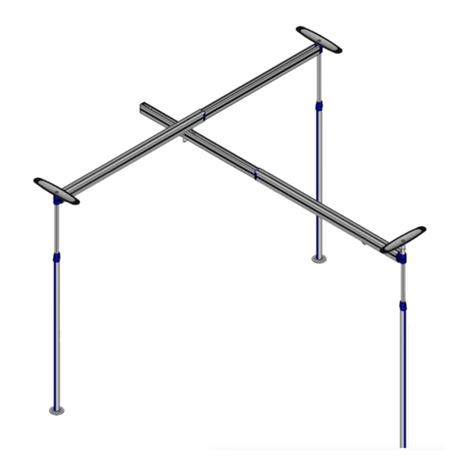
4
Thank you for purchasing ARJO equipment
Your Maxi Move is part of a series of quality products
designed especially for hospitals, nursing homes and
other health care uses.
We are dedicated to serving your needs and providing the
best products available along with training that will bring
your staff maximum benefit from every ARJO product.
Please contact us if you have any questions about the
operation or maintenance of your ARJO equipment.
All references to the patient in these instructions refer to
the person being lifted, and references to the attendant
refer to the person who operates the Maxi Move.
Techniques described in these instructions for fitting
slings and lifting patients from a reclining position can
be used for patients regardless of where they may be
lying, on the bed or on the floor.
Similarly, lifting a patient from a chair employs the same
techniques as when lifting a patient from a wheelchair or
from a sitting position on the edge of a bed.
Note: The need for a second attendant to support the
patient must be assessed for each individual case.
These instructions specifically show both the clip
attachment slings being used with the standard Dynamic
Positioning System (DPS) and the loop attachment
slings with the loop spreader bar. The same methods and
techniques described for the standard DPS can also be
applied to the optional powered DPS.
Intended Use
Maxi Move is a mobile passive lift. With a modular
approach, you can create a customized Maxi Move with
the features, accessories and degree of flexibility that
you need for your residents/patients.
Maxi Move is intended to be used in hospitals, nursing
homes or other health care facilities for the different
categories of residents/patients;
where the resident/patient
• sits in a wheelchair
• has no capacity to support him/herself
• cannot stand unsupported and is not able to bear
weight, not even partially
• is dependent on the caregiver in most situations
or, where the resident/patient
• is passive
• might be almost and/or completely bedridden
• is often stiff or has contracted joints
• is totally dependent on the caregiver.
Maxi Move shall always be handled by a trained
caregiver and in accordance with the instructions
outlined in these Operating and Product Care
Instructions.
Maxi Move is intended to be used with ARJO slings.
Only use ARJO-supplied slings and stretchers that are
designed to be used with Maxi Move.
Conditions
• The unit is cared for and serviced in accordance with
recommended, published “Operating and Product
Care Instructions” and the “Preventive Maintenance
Schedule”.
• The unit is maintained to the minimum requirements
as published in the “Preventive Maintenance
Schedule”.
• The servicing and product care, in accordance with
ARJO requirements, must begin on first use of the
unit by the customer.
• The equipment must be used for its intended purpose
only and is operated within the published limitations.
• Only ARJO designated spare parts should be used.
Expected lifetime
The expected lifetime of your ARJO lifter is 10 (ten)
years from the date of manufacture, providing the
following conditions are adhered to:-
The expected lifetime for fabric slings and fabric
stretchers is approximately 2 years from date of
purchase. This life expectancy only applies if the slings
and stretchers have been cleaned, maintained and
inspected in accordance with the “ARJO Sling
Information” documents, the “Operating and Product
Care Instructions” and the “Preventive Maintenance
Schedule”.
The expected lifetime for other consumable products,
such as batteries, fuses, lamps, gel cushions, filters, seal
kits, seat inserts, mattresses, safety belts, padded covers,
straps and cords is dependent upon the care and usage of
the equipment concerned. Consumables must be
maintained in accordance with published “Operating and
Product Care Instructions” and the “Preventive
Maintenance Schedule”.
The date of manufacture is shown in the first 6 digits of
the serial number, e.g. GB0521 123456 (GB = country of
manufacture, 05 = year 2005 and 21 = 21nd week of that
year). The remaining digits, are the machine
identification number.
Policy on number of staff
members required for resident/
patient transfer
ARJO’s passive and active series of lifters are designed
for safe usage with one caregiver. There are
circumstances, such as combativness, obesity,
contractures etc. of the individual that may dictate the
need for a two person transfer. It is the responsibility of
each facility and a professional medical person to make
a determination if a one or two person transfer is more
appropriate, based on task, resident load, environment,
capability, and skill level of the staff member.
Foreword

